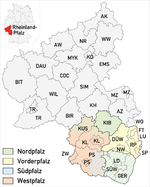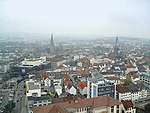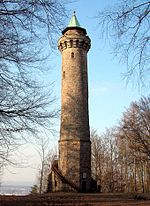German Research Centre for Artificial Intelligence
Artificial intelligence laboratoriesComputer science institutes in GermanyInformation technology research institutesLaboratories in Germany

The German Research Center for Artificial Intelligence (German: Deutsches Forschungszentrum für Künstliche Intelligenz, DFKI) is one of the world's largest nonprofit contract research institutes for software technology based on artificial intelligence (AI) methods. DFKI was founded in 1988, and has facilities in the German cities of Kaiserslautern, Saarbrücken, Lübeck, Oldenburg, Osnabrück, Bremen, Darmstadt and Berlin. DFKI shareholders include Google, Microsoft, SAP and Daimler. The directors are Antonio Krüger (CEO) and Helmut Ditzer (CFO).
Excerpt from the Wikipedia article German Research Centre for Artificial Intelligence (License: CC BY-SA 3.0, Authors, Images).German Research Centre for Artificial Intelligence
Trippstadter Straße, Kaiserslautern Lämmchesberg
Geographical coordinates (GPS) Address Phone number Website Nearby Places Show on map
Geographical coordinates (GPS)
| Latitude | Longitude |
|---|---|
| N 49.429444444444 ° | E 7.7519444444444 ° |
Address
Institut für Oberflächen- und Schichtanalytik GmbH
Trippstadter Straße 120
67663 Kaiserslautern, Lämmchesberg
Rhineland-Palatinate, Germany
Open on Google Maps








